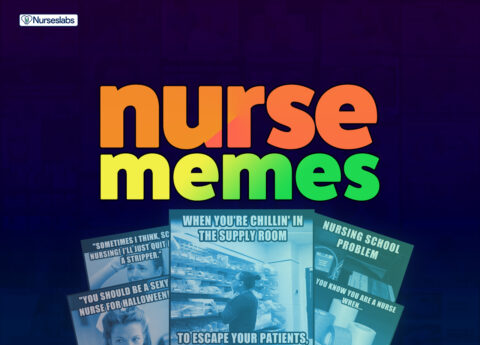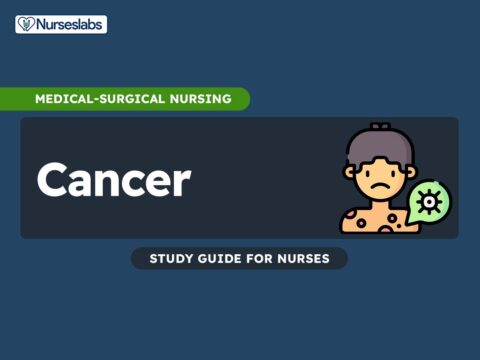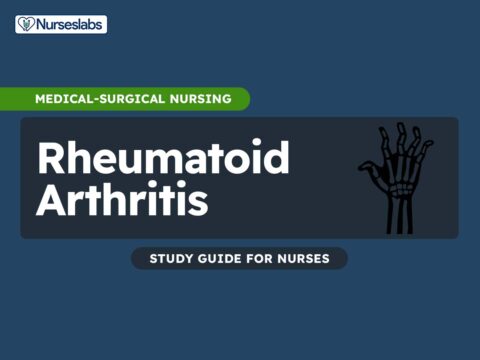Cholecystitis is the acute or chronic inflammation of the gallbladder.
What is Cholecystitis?
Several disorders affect the biliary system and interfere with normal drainage of bile into the duodenum.
- Cholecystitis is the acute or chronic inflammation of the gallbladder.
Classification
There are two classifications of cholecystitis:
- Calculous cholecystitis. In calculous cholecystitis, a gallbladder stone obstructs bile outflow.
- Acalculous cholecystitis. Acalculous cholecystitis describes acute inflammation in the absence of obstruction by gallstones.
Pathophysiology
Calculous and acalculous cholecystitis have different origins.
- Obstruction. Calculous cholecystitis occurs when a gallbladder stone obstructs the bile outflow.
- Chemical reaction. Bile remaining in the gallbladder initiates a chemical reaction; autolysis and edema occur.
- Compression. Blood vessels in the gallbladder compressed, compromising its vascular supply.
Statistics and Incidences
Cholecystitis account for most patients requiring gallbladder surgery.
- Although not all occurrences of cholecystitis are related cholelithiasis, more than 90% of patients with acute cholecystitis have gallstones.
- The acute form is most common during middle age.
- The chronic form usually occurs among elderly patients.
Causes
The causes of cholecystitis include:
- Gallbladder stone. Cholecystitis is usually associated with gallstone impacted in the cystic duct.
- Bacteria. Bacteria plays a minor role in cholecystitis; however, secondary infection of bile occurs in approximately 50% of cases.
- Alterations in fluids and electrolytes. Acalculous cholecystitis is speculated to be caused by alterations in fluids and electrolytes.
- Bile stasis. Bile stasis or the lack of gallbladder contraction also play a role in the development of cholecystitis.
Clinical Manifestations
Cholecystitis causes a series of signs and symptoms:
- Pain. Right upper quadrant pain occurs with cholecystitis.
- Leukocytosis. An increase in the WBC occurs because of the body’s attempt to ward off pathogens.
- Fever. Fever occurs in response to the infection inside the body.
- Palpable gallbladder. The gallbladder becomes edematous as infection progresses.
- Sepsis. Infection reaches the bloodstream and the body undergoes sepsis.
Complications
Cholecystitis can progress to gallbladder complications, such as:
- Empyema. An empyema of the bladder develops if the gallbladder becomes filled with purulent fluid.
- Gangrene. Gangrene develops because the tissues do not receive enough oxygen and nourishment at all.
- Cholangitis. The infection progresses as it reaches the bile duct.
Assessment and Diagnostic Findings
Studies used in the diagnosis of cholecystitis include:
- Biliary ultrasound: Reveals calculi, with gallbladder and/or bile duct distension (frequently the initial diagnostic procedure).
- Oral cholecystography (OCG): Preferred method of visualizing general appearance and function of gallbladder, including presence of filling defects, structural defects, and/or stone in ducts/biliary tree. Can be done IV (IVC) when nausea/vomiting prevent oral intake, when the gallbladder cannot be visualized during OCG, or when symptoms persist following cholecystectomy. IVC may also be done preoperatively to assess structure and function of ducts, detect remaining stones after lithotripsy or cholecystectomy, and/or to detect surgical complications. Dye can also be injected via T-tube drain postoperatively.
- Endoscopic retrograde cholangiopancreatography (ERCP): Visualizes biliary tree by cannulation of the common bile duct through the duodenum.
- Percutaneous transhepatic cholangiography (PTC): Fluoroscopic imaging distinguishes between gallbladder disease and cancer of the pancreas (when jaundice is present); supports the diagnosis of obstructive jaundice and reveals calculi in ducts.
- Cholecystography (for chronic cholecystitis): Reveals stones in the biliary system. Note:Contraindicated in acute cholecystitis because patient is too ill to take the dye by mouth.
- Nonnuclear CT scan: May reveal gallbladder cysts, dilation of bile ducts, and distinguish between obstructive/nonobstructive jaundice.
- Hepatobiliary (HIDA, PIPIDA) scan: May be done to confirm diagnosis of cholecystitis, especially when barium studies are contraindicated. Scan may be combined with cholecystokinin injection to demonstrate abnormal gallbladder ejection.
- Abdominal x-ray films (multipositional): Radiopaque (calcified) gallstones present in 10%–15% of cases; calcification of the wall or enlargement of the gallbladder.
- Chest x-ray: Rule out respiratory causes of referred pain.
- CBC: Moderate leukocytosis (acute).
- Serum bilirubin and amylase: Elevated.
- Serum liver enzymes—AST; ALT; ALP; LDH: Slight elevation; alkaline phosphatase and 5-nucleotidase are markedly elevated in biliary obstruction.
- Prothrombin levels: Reduced when obstruction to the flow of bile into the intestine decreases absorption of vitamin K.
- Ultrasonography. Ultrasound is the preferred initial imaging test for the diagnosis of acute cholecystitis; scintigraphy is the preferred alternative.
- CT scan. CT scan is a secondary imaging test that can identify extra-biliary disorders and acute complications of cholecystitis.
- MRI. Magnetic resonance imaging is also a possible secondary choice for confirming a diagnosis of acute cholecystitis.
- Oral cholecystography. Preferred method of visualizing general appearance and function of the gallbladder.
- Cholecystogram. Cholecystography reveals stones in the biliary system.
- Abdominal xray. Radiopaque or calcified gallstones present in 10% to 15% of cases.
Medical Management
Management may involve controlling the signs and symptoms and the inflammation of the gallbladder.
- Fasting. The patient may not be allowed to drink or eat at first in order to take the stress off the inflamed gallbladder; IV fluids are prescribed to provide temporary food for the cells.
- Supportive medical care. This may include restoration pf hemodynamic stability and antibiotic coverage for gram-negative enteric flora.
- Gallbladder stimulation. Daily stimulation of gallbladder contraction with IV cholecystokinin may help prevent the formation of gallbladder sludge in patients receiving TPN.
Pharmacologic Therapy
The following medications may be useful in patients with cholecystitis:
- Antibiotic therapy. Levofloxacin and Metronidazole for prophylactic antibiotic coverage against the most common organisms.
- Promethazine or Prochlorperazine may control nausea and prevent fluid and electrolyte disorders.
- Oxycodone or Acetaminophen may control inflammatory signs and symptoms and reduce pain.
Surgical Management
Because cholecystitis frequently recurs, most people with the condition eventually require gallbladder removal.
- Cholecystectomy. Cholecystectomy is most commonly performed by using a laparoscope and removing the gallbladder.
- Endoscopic retrograde cholangiopancreatography (ERCP). ERCP visualizes the biliary tree by cannulation of the common bile duct through the duodenum.
Nursing Management
Management of cholecystitis include the following:
Nursing Assessment
- Integumentary system. Assess skin and mucous membranes.
- Circulatory system. Assess peripheral pulses and capillary refill.
- Bleeding. Assess for unusual bleeding: oozing from injection sites, epistaxis, bleeding gums, petechiae, ecchymosis, hematemesis, or melena.
- Gastrointestinal system. Assess for abdominal distension, frequent belching, guarding, and reluctance to move.
Nursing Diagnosis
Based on the assessment data, the major nursing diagnosis for the patient may include:
- Acute pain related to the inflammatory process.
- Risk for imbalanced nutrition related to self-imposed dietary restrictions and pain.
Nursing Care Planning & Goals
Main Article: 4 Cholecystitis and Cholelithiasis Nursing Care Plans
The major goals for the patient include:
- Relieve pain and promote rest.
- Maintain fluid and electrolyte balance.
- Prevent complications.
- Provide information about disease process, prognosis, and treatment needs.
Nursing Interventions
Treatment of cholecystitis depends on the severity of the condition and the presence or absence of complications.
- Pain assessment. Observe and document location, severity (0-10 scale), and character of pain.
- Activity. Promote bedrest, allowing the patient to assume a position of comfort.
- Diversion. Encourage use of relaxation techniques, and provide diversional activities.
- Communication. Make time to listen and to maintain frequent contact with the patient.
- Calories. Calculate caloric intake to identify nutritional deficiencies or needs.
- Food planning. Consult the patient about likes and dislikes, foods that cause distress, and preferred meal schedules.
- Promote appetite. Provide a pleasant atmosphere at mealtime and remove noxious stimuli.
- Laboratory studies. Monitor laboratory studies: BUN, pre-albumin, albumin, total protein, transferrin levels.
Evaluation
Expected patient outcomes are:
- Pain relieved.
- Homeostasis achieved.
- Complications prevented/minimized.
- Disease process, prognosis, and therapeutic regimen understood.
Discharge and Home Care Guidelines
The focus of discharge instructions for patients with cholecystitis is education.
- Education. Patients with cholecystitis must be educated regarding causes of their disease, complications if left untreated, and medical and surgical options.
- Activity. Ambulate and increase activity as tolerated.
- Diet. Consult with the dietitian or nutritional support to establish individual nutritional needs.
Documentation Guidelines
The focus of documentation should include:
- Client’s description of response to pain.
- Specifics of pain inventory.
- Expectations of pain management.
- Acceptable level of pain.
- Prior medication use.
- Caloric intake.
- Individual cultural or religious restrictions, personal preferences.
- Availability and use of resources.
- Plan of care.
- Teaching plan.
- Response to interventions, teaching, and actions performed.
- Attainment or progress toward desired outcomes.
- Modifications to plan of care.
Practice Quiz: Cholecystitis
Here are some practice questions for this study guide. Please visit our nursing test bank page for more NCLEX practice questions.
1. The initial course of treatment for a patient with cholecystitis may include:
A. Analgesics and antibiotics
B. Intravenous fluids.
C. Nasogastric suctioning.
D. All of the above.
1. Answer: D. All of the above.
Analgesics and antibiotics are primary medications for a patient with cholecystitis, and nasogastric suctioning is performed to prevent gastric sludge.
- Options A, B, C: All of the options are part of the treatment for cholecystitis.
2. A patient with cholecystitis is limited to low-fat liquids only. As foods are added to the diet, the patient must know that the following should be avoided:
A. Cooked fruits.
B. Eggs and cheese.
C. Lean meats.
D. Rice and tapioca.
2. Answer: B. Eggs and cheese.
Eggs and cheese are rich in cholesterol which is contraindicated in patients with cholecystitis.
- Option A: Cooked fruits are rich in fiber and good for the digestive health.
- Option C: Lean meats are low in fat content.
- Option D: Rice and tapioca are rich in carbohydrates.
3. Postoperative nursing observation includes assessing for:
A. Indicators of infection.
B. Leakage of bile into the peritoneal cavity.
C. Obstruction of bile drainage.
D. All of the above.
3. Answer: D. All of the above.
Assessing the indicators of infection, leakage of bile, and obstruction of bile drainage are all appropriate measures postoperatively.
- Options A, B, C: Assessment of the following are part of the postoperative nursing interventions.
4. Marie, a 51-year-old woman, is diagnosed with cholecystitis. Which diet, when selected by the client, indicates that the nurse’s teaching has been successful?
A. 4-6 small meals of low-carbohydrate foods daily.
B. High-fat, high-carbohydrate meals.
C. Low-fat, high-carbohydrate meals.
D. High-fat, low protein meals.
4. Answer: C. Low-fat, high-carbohydrate meals.
For the client with cholecystitis, fat intake should be reduced.
- Option A: Reducing carbohydrate intake would be contraindicated.
- Option B: Any diet high in fat may lead to another attack of cholecystitis.
- Option D: For the client with cholecystitis, fat intake should be reduced and the calories from fat should be substituted with carbohydrates.
5. Which clinical manifestation would the nurse expect a client diagnosed with acute cholecystitis to exhibit?
A. Jaundice, dark urine, and steatorrhea
B. Acute right lower quadrant (RLQ) pain, diarrhea, and dehydration
C. Ecchymosis petechiae, and coffee-ground emesis
D. Nausea, vomiting, and anorexia
5. Answer: D. Nausea, vomiting, and anorexia
Acute cholecystitis is an acute inflammation of the gallbladder commonly manifested by the following: anorexia, nausea, and vomiting.
- Option A: Jaundice, dark urine, and steatorrhea are clinical manifestations of the icteric phase of hepatitis.
- Option B: Tenderness and rigidity the right upper quadrant (RUQ) elicited on palpation (e.g., Murphy’s sign); fever; fat intolerance; and signs and symptoms of jaundice are indicative of biliary colic.
- Option C: Ecchymosis, petechiae, and coffee-ground emesis are clinical manifestations of esophageal bleeding.





































Leave a Comment